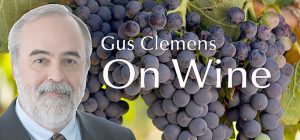Wine is the world’s most interesting alcoholic beverage. You expect wine columnists to make such an assertion, but we can back up the claim.
There are three essential types of alcoholic beverages: beer, wine, spirits. Thanks to cultural and economic factors, beer has long been the most popular in the U.S. for several reasons.
Beer is the most popular beverage of the countries of origin—England and Germanic countries—for the first immigrants. Beer also is made from crops suited to the Atlantic seacoast where the first non-native Americans settled.
Spirits had a similar advantage. Production does not depend on difficult-to-grow crops. Grains for spirits also can be used for food crops for both humans and animals.
Wine is different. Immigrants from wine-producing countries like Italy, Spain, and France arrived later than other immigrants. Furthermore, it takes at least three years for a vineyard to consistently produce wine grapes, and wine is the product of a single growing season rather than a constant supply of commonplace raw materials.
Wine producers also tend to be a plant-to-bottle enterprise. Beer and spirit makers tend to be brewers and distillers who buy ingredients from whomever has some to sell. Often, the distinctive ingredient is water, and the U.S.—certainly in the beginning—had a plentiful supply of quality water.
Beer and spirits are faster and easier to make. Wine is the opposite, but it enjoys one distinct advantage. Because of its diversity, it is more interesting to drink. Individual wines have a direct connection to specific grapes, a specific place, a specific time.
Beer and spirits producers can claim they produce beverages with shades of difference—often using barrel aging techniques developed by winemakers—but none would argue they come close to variations found in wines.
Because the backstory of a wine is more interesting than beer or spirits, it has long been a more common subject of storytelling. That is a verifiable claim. In 2021, the federal government approved 178,724 different alcoholic beverage products for sale. Some 63% were wine, 24% were beer, and 12% were spirits.
The good news for wine writers—and for their readers—is wine provides a virtually inexhaustible supply of engaging stories about lands, grapes, weather, individuals, techniques, flavors—and on and on. Not only is wine more interesting to drink, it also is more interesting to read and write about.
Last round: My friend just gave me glass cookware from Jamaica as a present. It is Pyrex of the Caribbean. Wine time.


